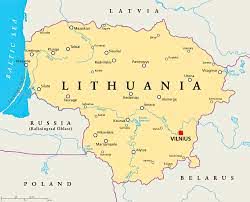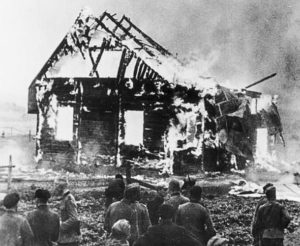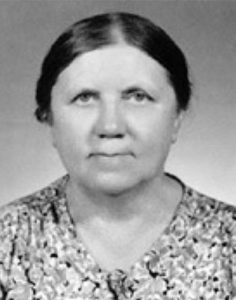 Jews have lived Lithuania since the fourteenth century. Between 1569 and 1792, when it came under Russian control, Lithuania was part of the Polish-Lithuanian Commonwealth, one of the largest empires in history.
Jews have lived Lithuania since the fourteenth century. Between 1569 and 1792, when it came under Russian control, Lithuania was part of the Polish-Lithuanian Commonwealth, one of the largest empires in history.
Within the empire and afterward, Lithuanian Jews remained a distinct group known as Litvaks. The territory where they lived encompassed areas of northeastern Poland, Belarus, Latvia, and Prussia.
 In the nineteenth century, the region was under Russian control. Antisemitism and official anti-Jewish policies resulted in pogroms. Throughout the late nineteenth and early twentieth century, Jewish culture in Lithuania thrived, despite outbreaks of antisemitic violence spurred by the growth of multiple secular movements.
In the nineteenth century, the region was under Russian control. Antisemitism and official anti-Jewish policies resulted in pogroms. Throughout the late nineteenth and early twentieth century, Jewish culture in Lithuania thrived, despite outbreaks of antisemitic violence spurred by the growth of multiple secular movements.
After World War I, Lithuania became an independent state again and Jews living in Lithuania were emancipated with some rights. Before World War II, Lithuania’s 60,000-strong Jewish community accounted for around one-third of Vilnius residents.
 Ona Šimaitė was a librarian at Vilnius University in 1940. In 1941, the Nazis invaded Lithuania and created the Vilna Ghetto. She began entering the ghetto under the pretext of recovering library books from Jewish university students. Over the next three years, she smuggled in food and small arms and other provisions, and smuggled out literary and historical documents. She served as a mail carrier for ghetto inhabitants, found people who would forge documents for Jews, offered her home as a temporary refuge, and smuggled Jewish children out of the ghetto to people agreed to hide them. In 1944 she was discovered, arrested and tortured. She was deported to Dachau, and then exiled to southern France.
Ona Šimaitė was a librarian at Vilnius University in 1940. In 1941, the Nazis invaded Lithuania and created the Vilna Ghetto. She began entering the ghetto under the pretext of recovering library books from Jewish university students. Over the next three years, she smuggled in food and small arms and other provisions, and smuggled out literary and historical documents. She served as a mail carrier for ghetto inhabitants, found people who would forge documents for Jews, offered her home as a temporary refuge, and smuggled Jewish children out of the ghetto to people agreed to hide them. In 1944 she was discovered, arrested and tortured. She was deported to Dachau, and then exiled to southern France.
 After the Kaunas ghetto was established in August 1941, Sofija Binkienė, wife of Kazys Binkis, came to the aid of Jews interned there. The Binkis home became a permanent shelter for a number of Jews and in addition it served as a midway station where Jews could receive encouragement and psychological support. The Binkises were also helped by their daughters.
After the Kaunas ghetto was established in August 1941, Sofija Binkienė, wife of Kazys Binkis, came to the aid of Jews interned there. The Binkis home became a permanent shelter for a number of Jews and in addition it served as a midway station where Jews could receive encouragement and psychological support. The Binkises were also helped by their daughters.
Around 95% of the Jewish population perished under Nazi Germany’s 1941-1944 occupation. The mass murder of the Jews of Vilnius was by Lithuanians, who were more enthusiastic about this, than the Nazis. Lithuanian Jews who got sent to the gulags were more likely to survive World War II than those they left behind.
 Most Lithuanian Jews today live in the capital city of Vilnius (Vilna), but there are also several smaller communities, notably in Kaunas (Kovno), Klaipeda (Memel), Šiauliai (Shavl), Panevežys (Pónevezh) and Ukmerg (Vilkomir).
Most Lithuanian Jews today live in the capital city of Vilnius (Vilna), but there are also several smaller communities, notably in Kaunas (Kovno), Klaipeda (Memel), Šiauliai (Shavl), Panevežys (Pónevezh) and Ukmerg (Vilkomir).
Today Lithuania’s Jewish community now numbers around between 3,000 and 6,500 Jews. There is a Jewish day school and kindergarten in Vilnius and Sunday schools are maintained in other towns.